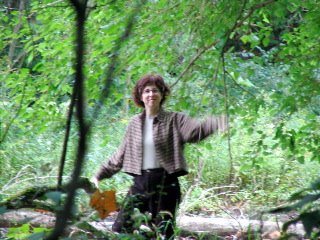
I read in a book about the historical Jesus that when Jesus admonished his followers that they were not “of the world” he meant the human-created world. I call this the “manufactured world.” The manufactured world is to be distinguished from the God-created world, the Earth. So, I would agree with Jesus that those who follow his path of love must live in the created world and not in the manufactured world.
This definition is just one tiny piece of my struggle with definitions as I work to consolidate my understandings into some kind of cohesive system of belief.
Humans do not live in a static, scientifically-provable “real

world.” There may be a static, scientifically-provable world out there, but we cannot directly experience it. Humans simply don’t have the capability. First, we have to experience it through our physical sensory equipment. Then we might use various tools to extend the reach of our senses. More than that, and more important than that, are the internal models and other mental tools we use to make sense of what we see.
Can we see without making sense of what we see?
If, for example, I see a ghost and the ghost is real, I might still only “see” a wisp of smoke, a shimmer of light. I don’t believe in ghosts. They don’t make sense in my internal model of reality. I cannot and never will see one. But in some models of reality, in some cultures, ghosts are very real and people see them all the time.
One can only imagine what infants experience: a chaos of sensory input. Without the models and mental tools that give this input meaning, humans would never be able to sort out the sensory input, connect it to other input, make sense of it, store it, retrieve it, or interact with the world using it.

I believe that we live inside our models of the world. I call these models culture, but only for lack of a better word. Culture is still associated with the “high culture” of the arts and music, or with the interpersonal culture of manners and morals. But culture is more than that. Culture is also understood as location-, religion-, or group-related world models, such as “French Culture,” “African-American Culture,” “Islamic or Christian Culture.” But culture is more, even, than that. It is the experiential water in which we swim. Everything we do, say, believe, how we understand our bodies, our souls, the meaning of life, our medicine, education, transportation, and all the multitude of systems that define and control our lives is culture.
We don’t notice culture, unless we make a serious effort to do so, and even then, there are parts of culture that appear to be related to the human instinct, that appear “cross-culturally,” such as the
a priori models of space and time (a la Kant). Confused yet? Me, too!
But I can’t begin to point out to people that they live in a variation of the Dominator Culture — or should I call it the Dominator Reality? — unless I can define my terms. I can’t point to an alternative reality, the possible world of the Animist Culture, unless I can define the words dominator, culture, animist, reality, internal models, and so on. My readers might understand these words in typical ways, for example, “reality is what is.” But they won’t understand them as I seek to define them, for example, “reality is the meaningful model of the world in which we live, which exists inside of an unknowable mystery.” God is another of those words. The soul is another.
Argh! It’s been years working on definitions. And all I want to say is “Come on, human people!

There’s another world out there and it’s a good one! Open the gates. Walk on through into the garden!” No wonder Jesus had such a hard time getting people to understand him. He, too, was challenging the reality of the Dominator Culture in his own time and place.
Love,
Lilly










